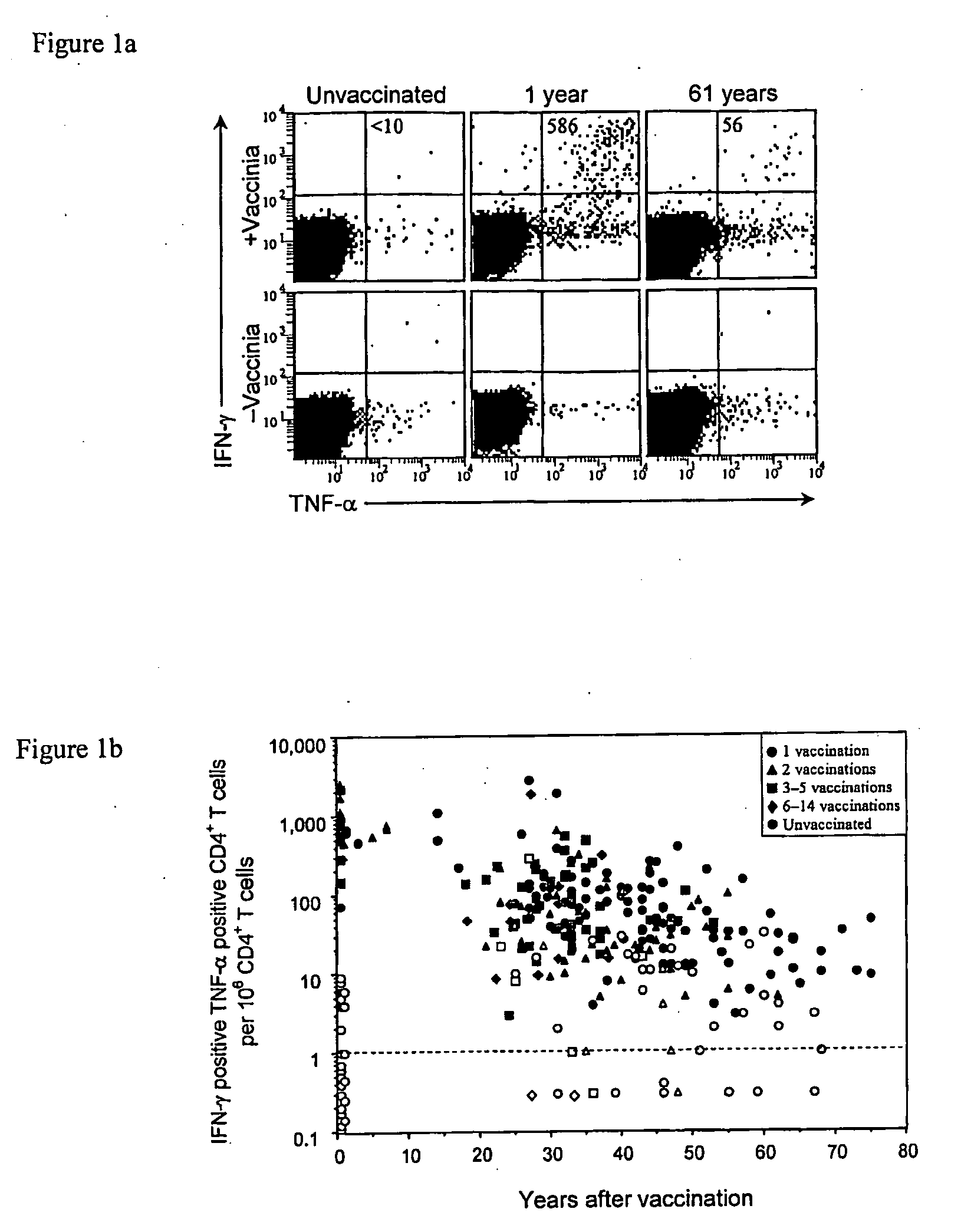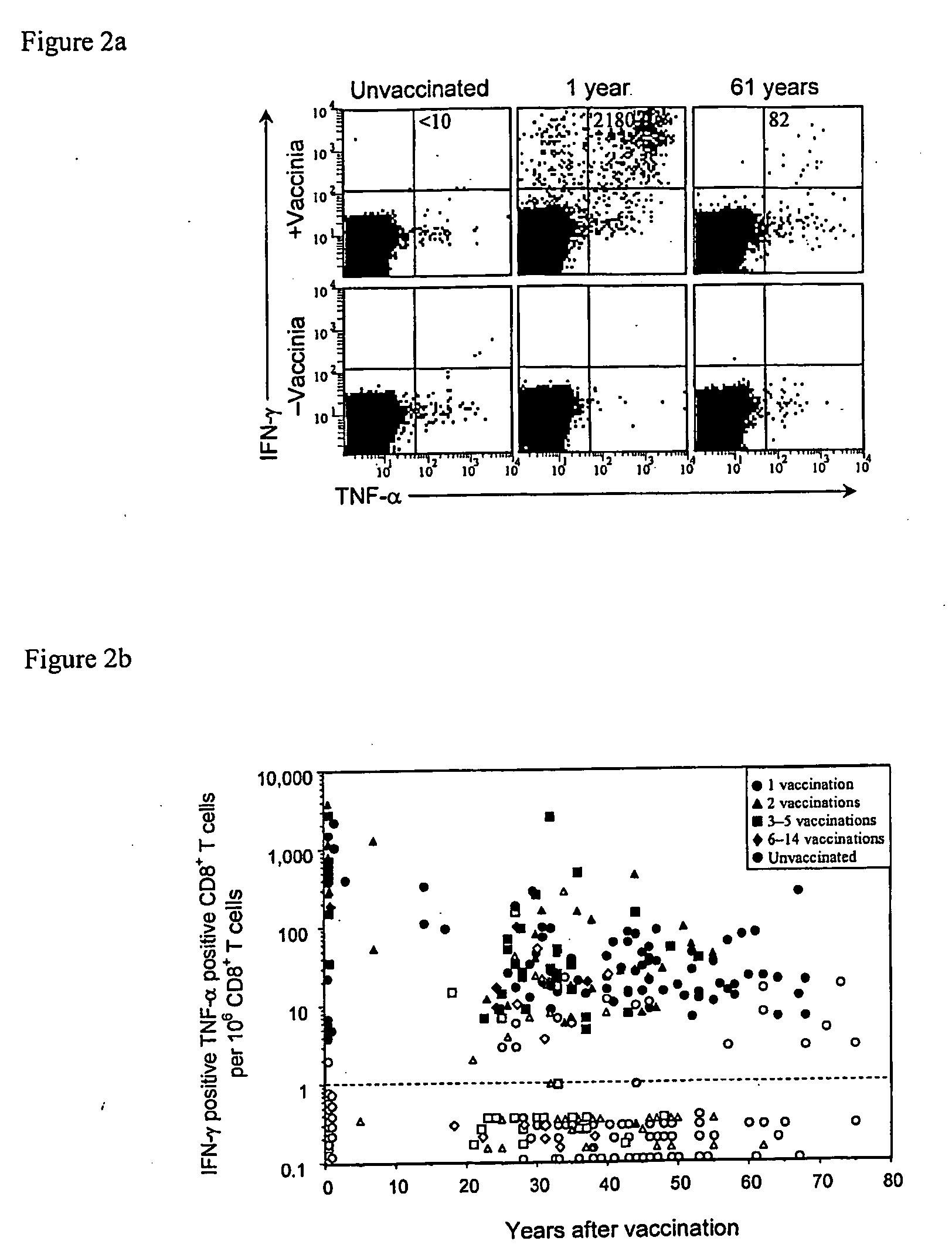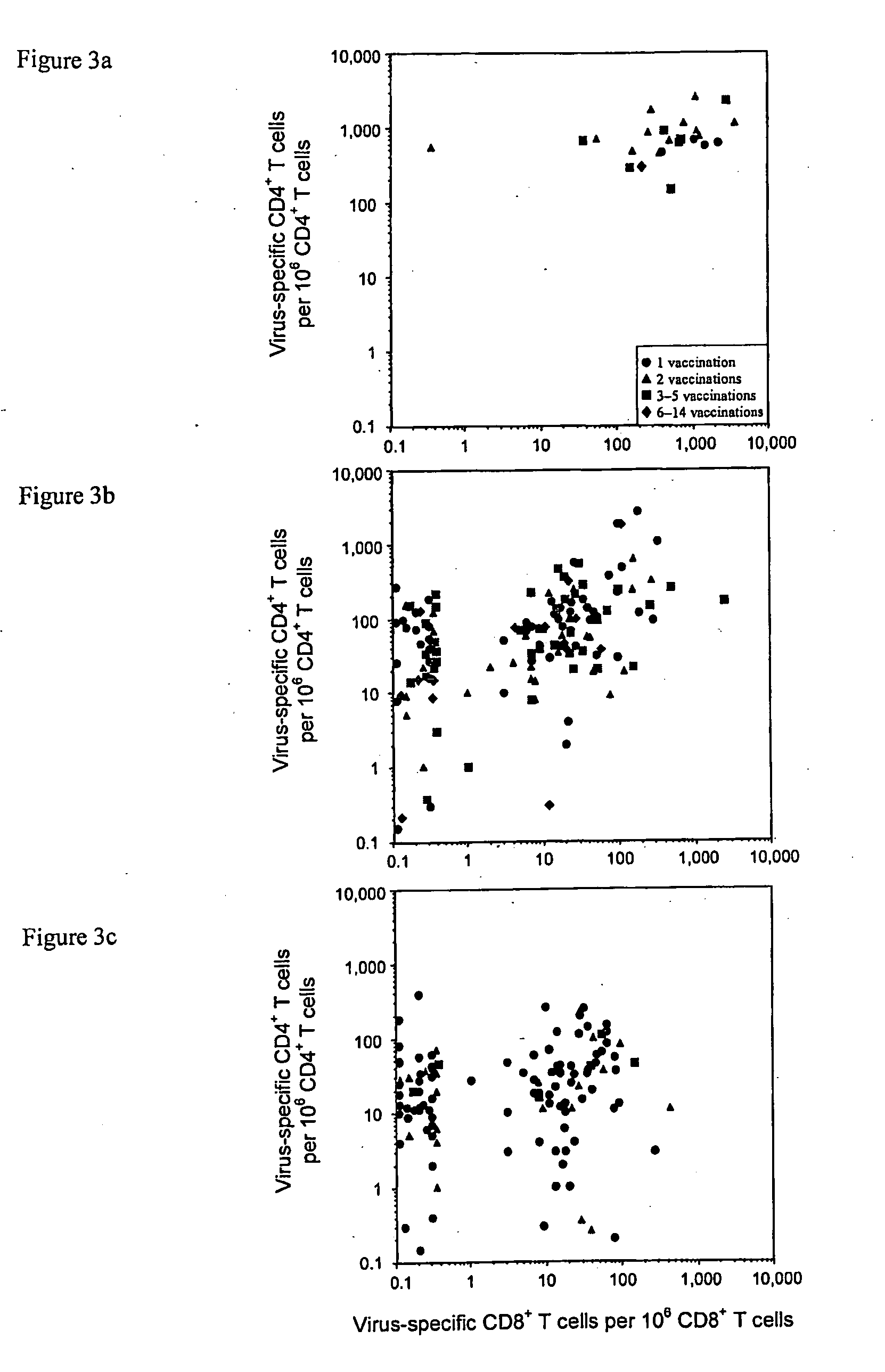Compositions and methods for diagnosis and treatment of orthopoxviruses
a technology of orthopoxvirus and composition, applied in the field of orthopoxvirus, can solve the problems of high contagiousness, high contagiousness, widespread illness and death, etc., and achieve the effect of rapid and reliable high-throughpu
- Summary
- Abstract
- Description
- Claims
- Application Information
AI Technical Summary
Benefits of technology
Problems solved by technology
Method used
Image
Examples
example i
CD4+ T Cell-Mediated Immune Responses were Evaluated in Volunteers Examined at 1 Month to 75 Years Post-Vaccination, and Significant CD4+ T Cell Responses were Detected as Late as 75 Years Post-Immunization
[0148]Quantification of virus-specific CD4+ T cell responses. Very little is known about the duration of vaccinia-specific T cell responses or what proportion of vaccinated individuals will maintain detectable levels of CD4+ and / or CD8+ T cell memory. To shed light on this fundamental question, the maintenance of virus-specific immunity after smallpox vaccination was analyzed by conducting a non-randomized, cross-sectional analysis of CD4+ T cell-mediated immune responses in volunteers examined at 1 month to 75 years post-vaccination. Although the frequency of virus-specific CD4+ T cells waned slowly over time, T cell responses in most subjects remained at levels within 1-2 orders of magnitude of those achieved at ≦7 years post-vaccination and could be detected as late as 75 years...
example ii
CD8+ T Cell-Mediated Immune Responses were Evaluated in Volunteers Examined at 1 Month to 75 Years Post-Vaccination, and Significant CD8+ T Cell Responses were Detected as Late as 75 Years Post-Immunization
[0155]Quantification of virus-specific CD8+ T cell responses. The maintenance of virus-specific immunity after smallpox vaccination was also analyzed by conducting a non-randomized, cross-sectional analysis of antiviral antibody and CD8+ T cell-mediated immune responses in volunteers examined at 1 month to 75 years post-vaccination. Robust CD8+ T cell responses were identified (FIG. 2B), and similar to CD4+ T cells (FIG. 1B), CD8+ T cells declined slowly with a half-life of 8 to 15 years (TABLE 1).
[0156]Antiviral CD8+ T cell responses were quantified by ICCS following direct ex vivo stimulation with vaccinia-infected cells (FIG. 2A).
[0157]FIG. 2 shows the levels of virus-specific CD8+ T cell memory following smallpox vaccination. FIG. 2A shows a representative flow cytometry dotpl...
example iii
The Duration of Antiviral Antibodies were Examined in Volunteers Examined at 1 Month to 75 Years Post-Vaccination, and Vaccinia-Specific Serum Antibody Levels were found to be Remarkably Stable between 1 Year to 75 Years Post-Vaccination
[0165]Duration of antiviral antibody production. The maintenance of virus-specific immunity after smallpox vaccination was analyzed by conducting a non-randomized, cross-sectional analysis of antiviral antibodies in volunteers examined at 1 month to 75 years post-vaccination. In striking contrast to vaccinia-specific T cell memory which declined steadily over time (FIGS. 1 and 2), vaccinia-specific serum antibody levels were remarkably stable between 1 year to 75 years post-vaccination (FIG. 4).
[0166]Vaccinia-specific neutralizing antibody titers have been the cardinal feature used to estimate the level of immunity afforded by smallpox vaccination (Fenner et al. in The pathogenesis, immunology, and pathology of smallpox and vaccinia, World Health Org...
PUM
| Property | Measurement | Unit |
|---|---|---|
| time | aaaaa | aaaaa |
| time | aaaaa | aaaaa |
| concentration | aaaaa | aaaaa |
Abstract
Description
Claims
Application Information
 Login to View More
Login to View More - R&D
- Intellectual Property
- Life Sciences
- Materials
- Tech Scout
- Unparalleled Data Quality
- Higher Quality Content
- 60% Fewer Hallucinations
Browse by: Latest US Patents, China's latest patents, Technical Efficacy Thesaurus, Application Domain, Technology Topic, Popular Technical Reports.
© 2025 PatSnap. All rights reserved.Legal|Privacy policy|Modern Slavery Act Transparency Statement|Sitemap|About US| Contact US: help@patsnap.com



